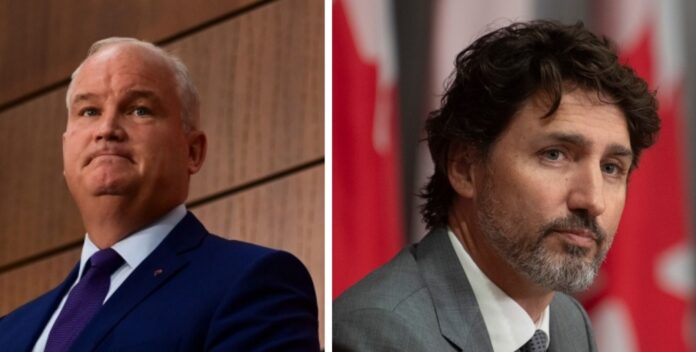– 51% say top priority for federal government is getting COVID-19 under control
– Conservatives have fallen slightly behind in B.C., and trail by a notable margin in Ontario and Quebec
AS the Prime Minister Justin Trudeau hints at the probability of a 2021 election, the leaders of both front-running parties find themselves under ever-increasing scrutiny.
Trudeau finds his conduct on COVID-19 management – especially vaccine rollout – under the microscope, but Canadians are also evaluating the performance of Conservative Leader Erin O’Toole.
And while the Liberal leader sees neither significant improvement nor deterioration in the way Canadians perceive him, views of his main opponent are trending in a more negative direction.
New public opinion polling data from the non-profit Angus Reid Institute finds nearly half (47%) in this country have an unfavourable view of O’Toole – a 16-point increase since last September when fewer than one-third (31%) felt the same. One-in-five (22%) remain unsure about him.
These new data also find the incumbent Liberals holding a five-point advantage, 35 per cent to 30 per cent, over the Conservatives. The NDP receives support from one-in-five Canadians (20%).

The challenge for O’Toole and his Conservative Party is to reverse the current trend and attempt to pick up momentum in Canada’s most populous provinces. While the CPC hold vote advantages in Alberta, Saskatchewan, and Manitoba, the party has fallen slightly behind in British Columbia, and now trails by a notable margin in Ontario and Quebec.

More Key Findings:
- Half of Canadians (51%) say that the COVID-19 response is the top issue for the federal government to address right now. This is the highest proportion holding this opinion since the pandemic began. Healthcare places second (38%), with economy third (29%) on the priority list.
- If an election were called, Canadians are slightly more comfortable voting by mail (50% completely comfortable) than in person (44% completely comfortable. In each case, three-in-ten say they are not comfortable doing so.












